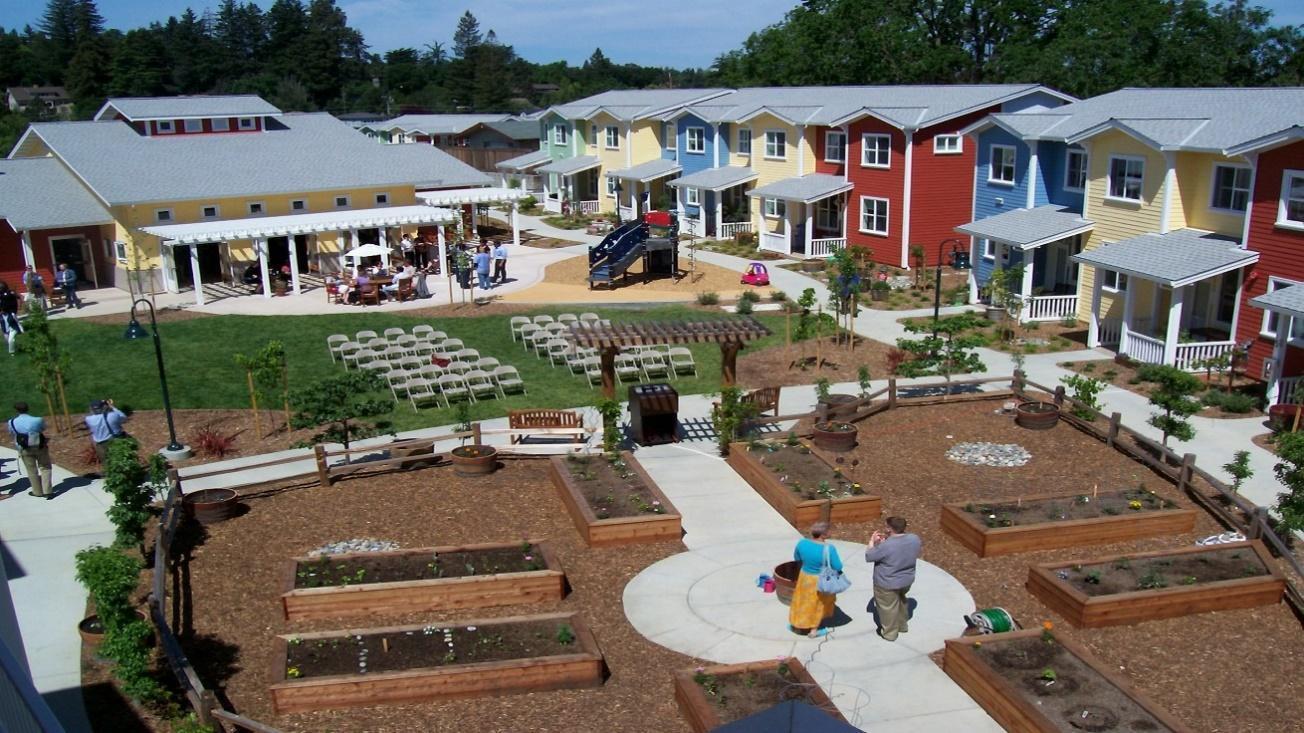
2 minute read
5.2. 1992 – ANDELSSAMFUNDET HJORTSHOJ
Hjortshoj, Demark, 1992
No. of users - 270- 170 adults; 100 children
Advertisement
Dwelling units: 119 divided into 8 dwelling groups
Andelssamfundet Hjortshoj was the first to propose that people live their lives on this planet without leaving any residue. The first structures were created in 1992, and their methods of construction were revolutionary at the time. Some may argue that houses were socially constructed and covered in clay, establishing resilience before or after much. The houses were demolished for many years from the initial step to the real operation in an attempt to persuade the Aarhus Municipality that dwellings could be built out of clay, compacted soil, and unstructured wood. They were able to do so after completing a test room, and the first seating group was able to get up. Group 2 came just after the brick buildings that the occupants had built themselves (Andelssamfundet Hjortshoj 2015).
Sustainable housing represents several assessments in the fields of sustainable housing, energy, subdivision, building materials, and buildings. When society was created twenty-four years ago, it was far before the legislation, and environmentally friendly standards were commonplace. However, today's building demands are expanding, and structures built before 1992 cannot compete with new ones. However, as civilization evolves, new and inventive techniques to create continually while conserving energy are being investigated. Even the strongest ones. Existing electricity, solar heat, solar cells, local heating stations in businesses, a cutting-edge engine, and a stove heater are all part of Andelssamfundet Hjortshoj's power supply.
Facilities and Initiatives:
In the social community, there are five common houses, which means that several groups share one home. A washing room, a kitchen, a huge dining room, a binge-eating area, and a variety of local establishments such as a theater, bar, and audio systems are all offered. Residents can sign up for and use two shared electric automobiles for a modest monthly charge at the residence. On Wednesdays, you can get coffee, tea, and bread for a token charge from the cafe.
As part of its public spirit, Andelssamfundet Hjortshoj maintains one residential group that houses 16 people with special needs. So the community has a few protected workshops among these modest stores where they sell live meat, eggs from their hens, bread made in the communal kitchen, and leftover supper packages for monthly meals.
Apart from cattle, co-housing features a vegetable community, which is open to both community members and Hjortshoj inhabitants. Fruits and vegetables are more comfortable collecting as much as they need when they are ripe. For 100 members, they pay for a ride for the year (1100 km.). Every individual participates in the preservation of plants and vegetables, and also when fruits and vegetables are ripe, people can collect as much as they need. They are also able to connect with the local community in this way.
Architecture and Typology:
Owner-occupied housing, leasehold housing, and social housing are all available in Andelssamfundet Hjortshoj in a variety of architectural styles and ownerships. Many of the homes were created by the residents themselves, who experimented with alternative sustainable building methods, resulting in architecture that is diverse and creative. octagon buildings, a longhouse, and round wooden balconies are among the honorable mentions.






